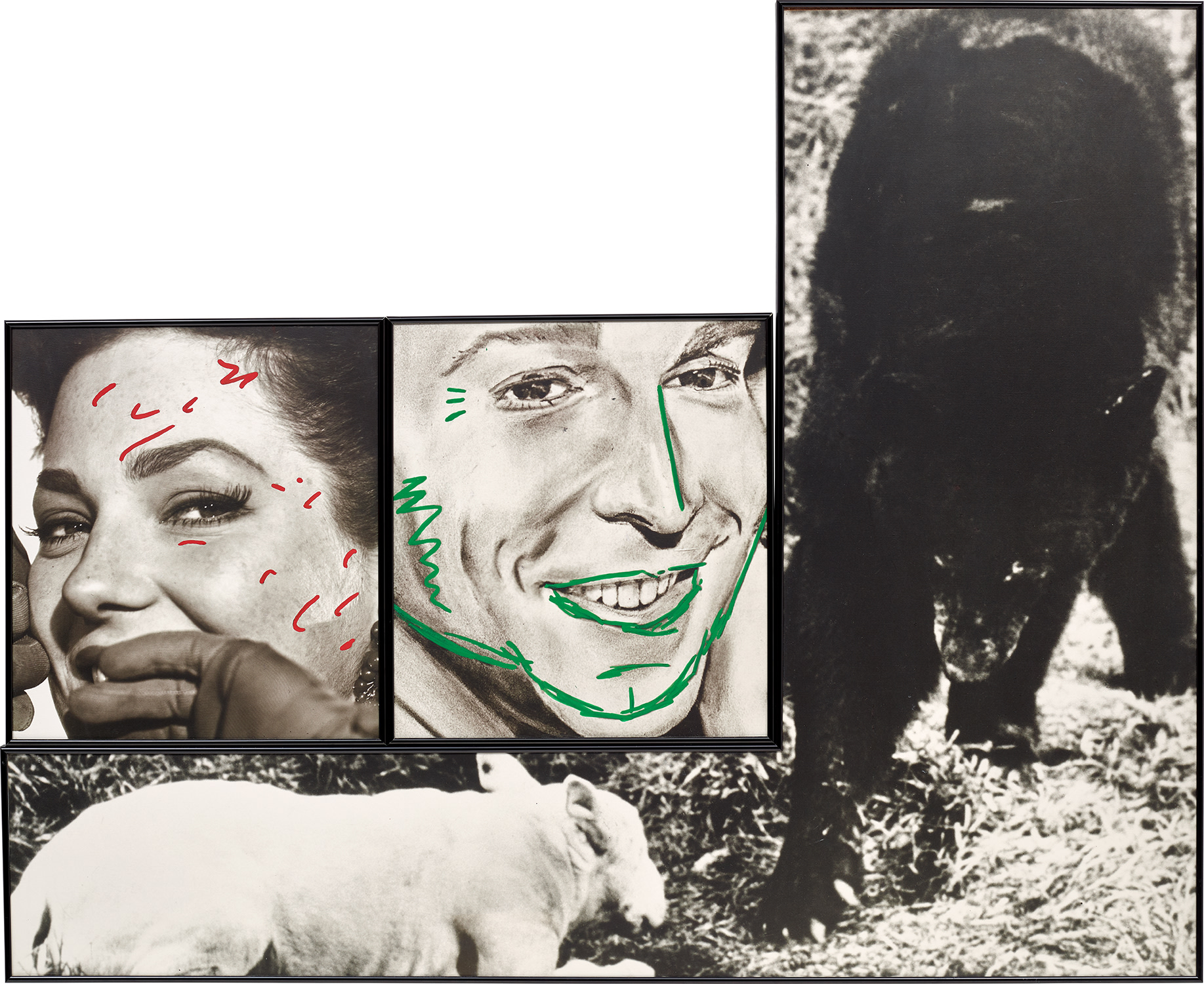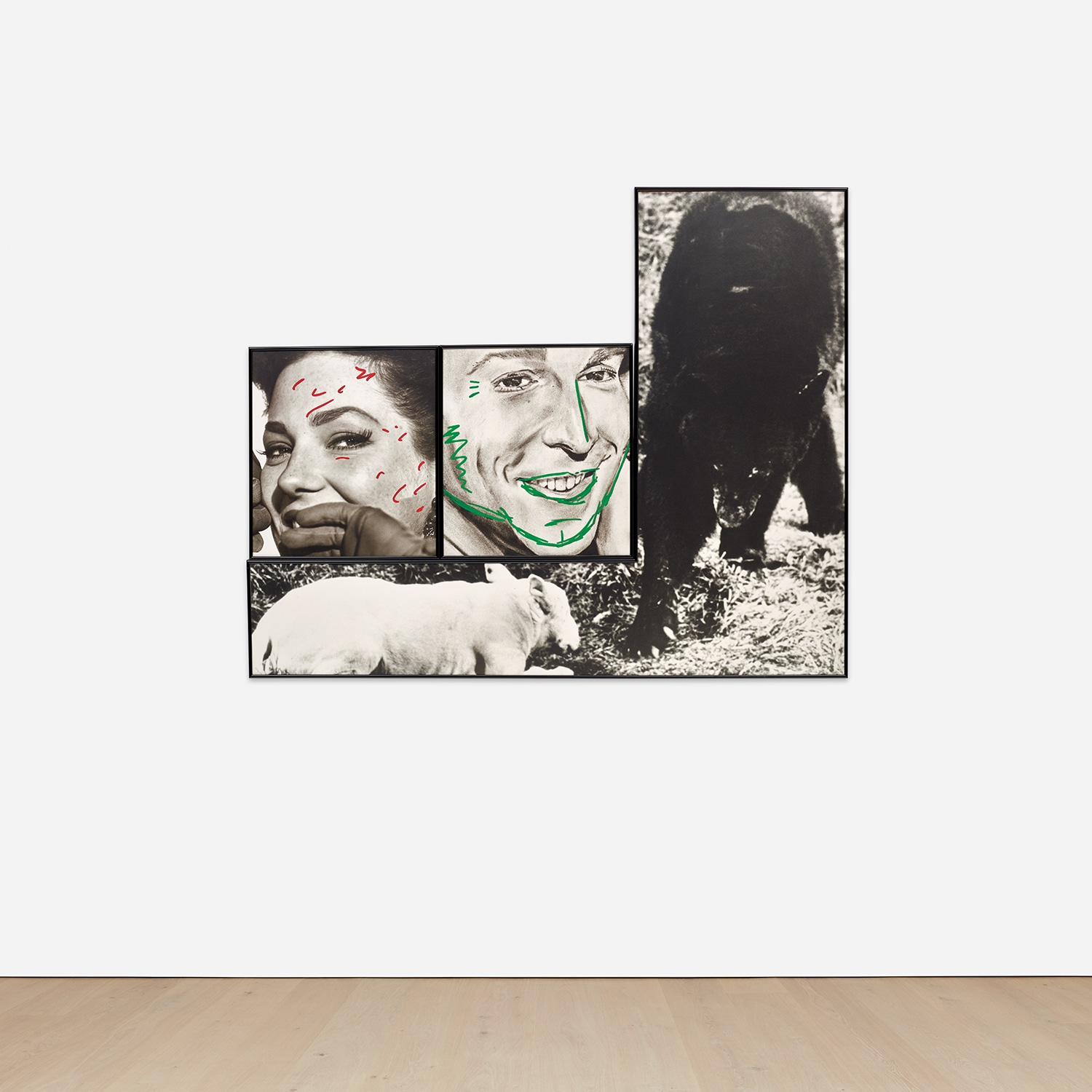



35
John Baldessari
Female and Male Faces (With Notations) with Black and White Commentary
vinyl paint on black and white photograph, in 3 parts
overall 122.5 x 150.6 cm (48 1/4 x 59 1/4 in.)
Executed in 1989.